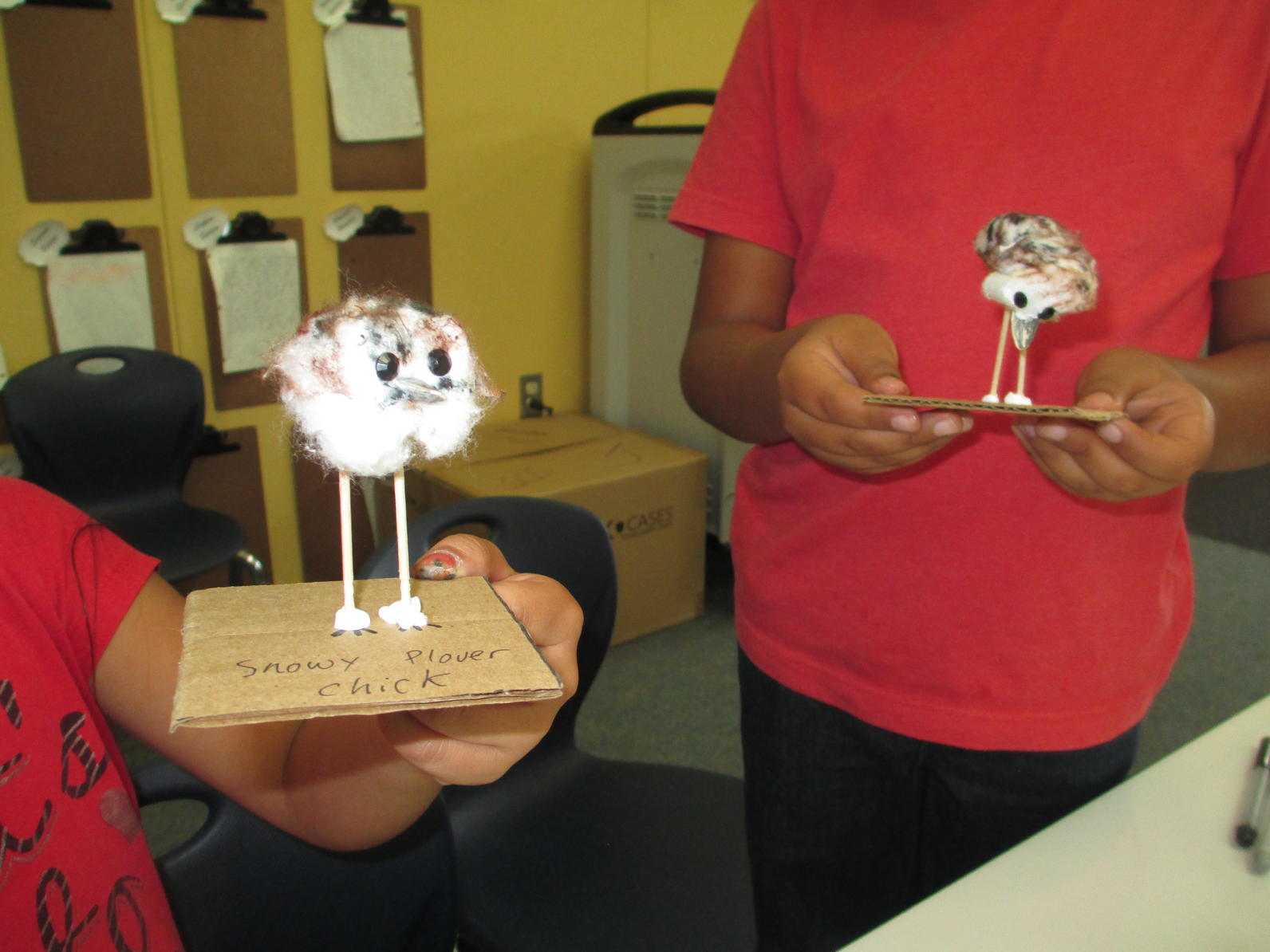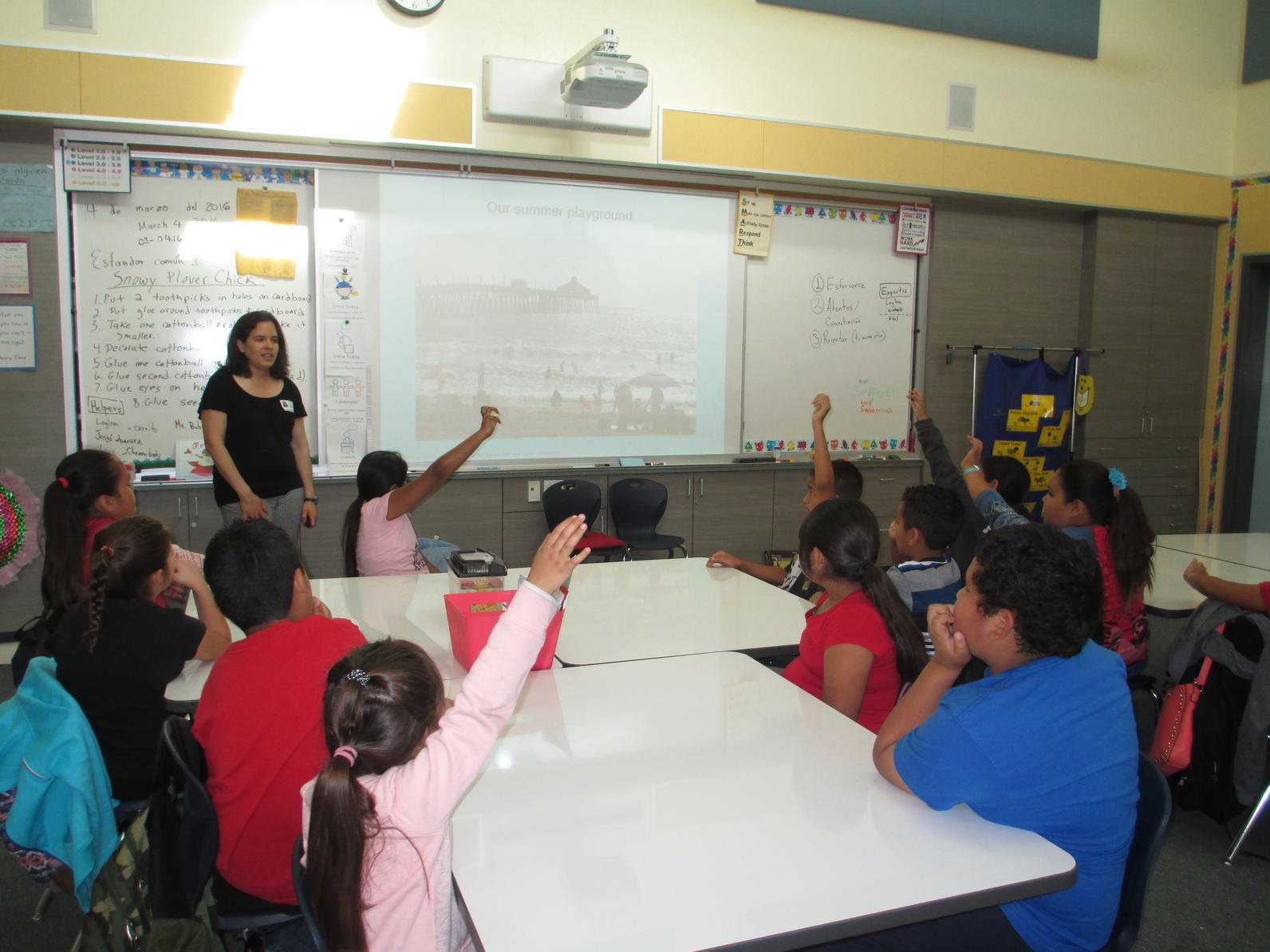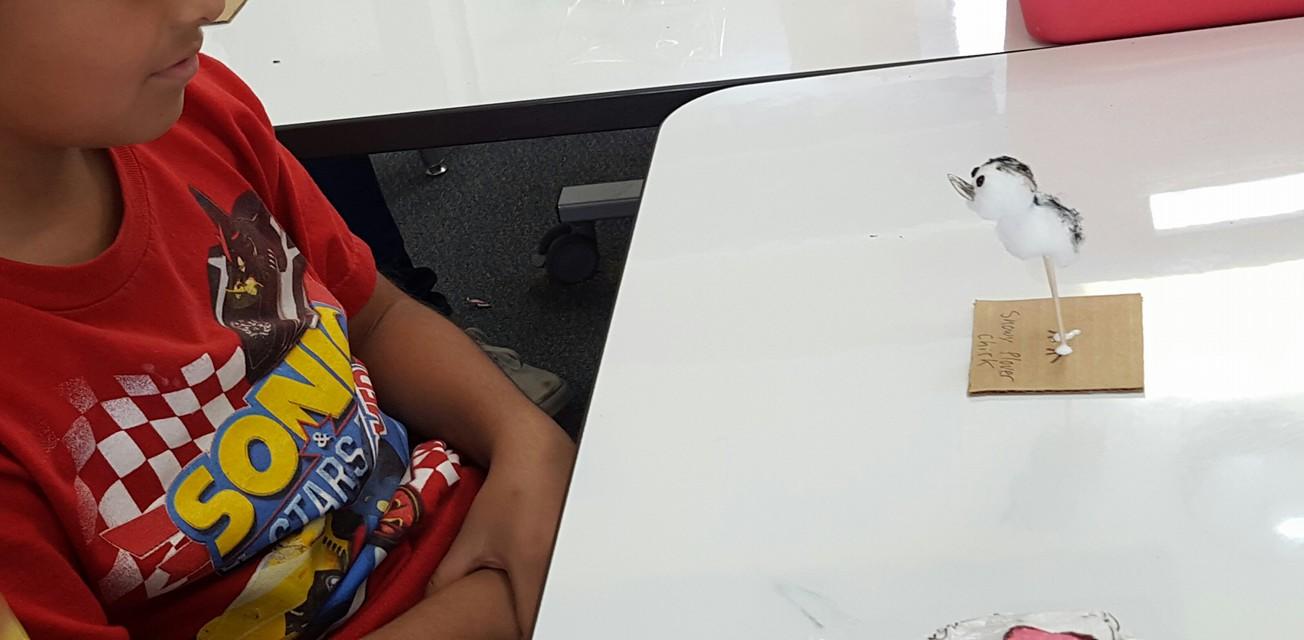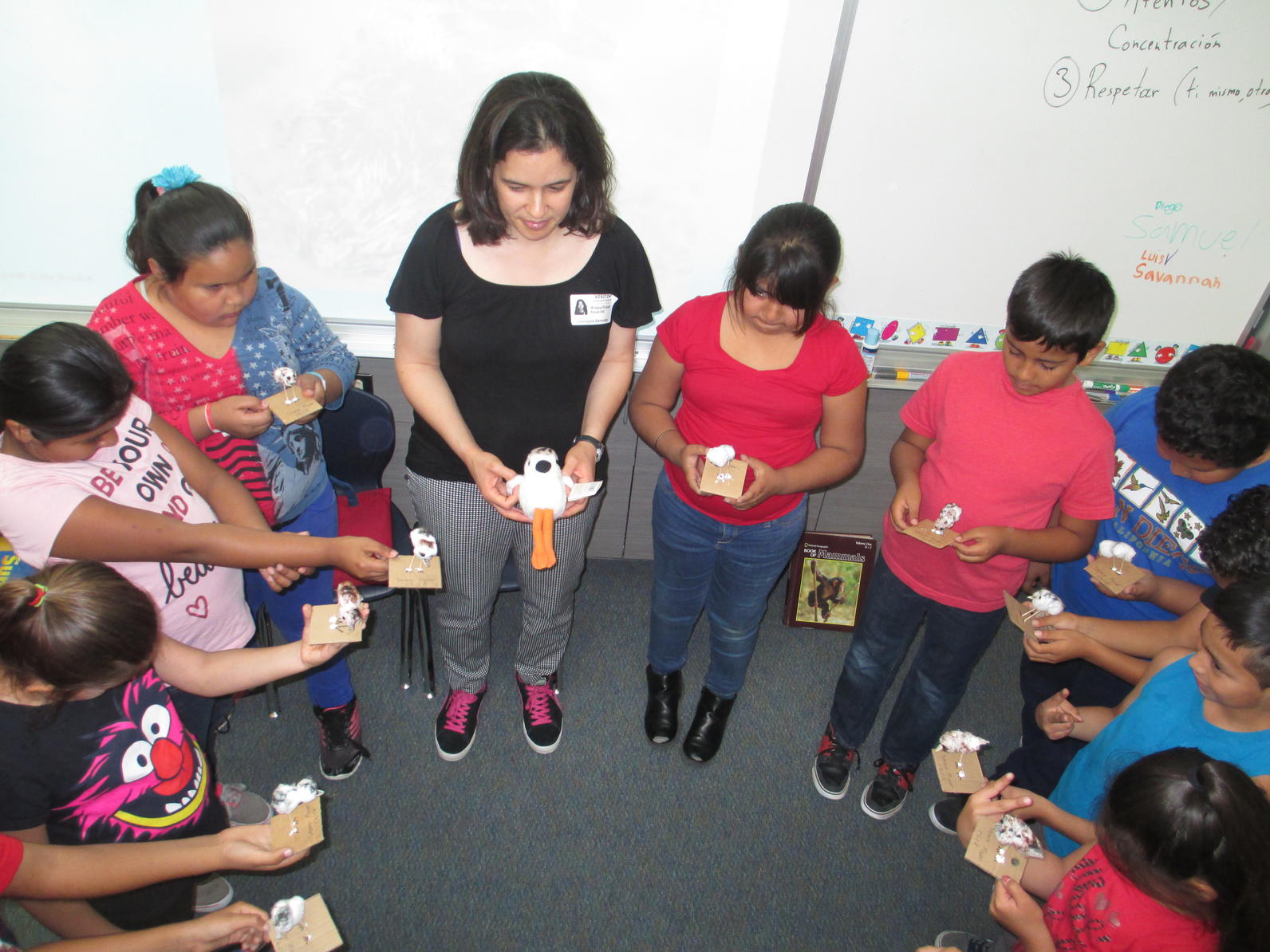
“How can we help the Snowy Plovers that nest on beaches here in San Diego?” Five hands shot up in the air, each student sharing ideas like designating certain areas on the beach just for the birds, picking up trash, and educating people about the plovers.

Last week, I visited my friend Cindy Carbajal’s classroom to talk to her third grade students about Snowy Plovers and some of the other shorebirds that rely on San Diego beaches. My elementary school is two blocks from Cindy’s school in East County San Diego, and I remember loving animals and wanting to save threatened and endangered species when I was their age. This was my second presentation in Cindy’s classroom and it always feels like a little bit of a homecoming for me.
The San Diego Audubon Society has developed comprehensive curriculum for students on Western Snowy Plovers and California Least Terns. They have mentored other chapters on implementing a Sharing Our Shores Education program in additional school districts in California. I used one of their lesson plans, which is available on our website.
I also borrowed another activity created by an educator in Florida. Using simple materials, kids can make their own Snowy Plover chick out of cotton balls and toothpicks. Cotton ball chick instructions are available here.
After telling the students a little bit about myself and the path I took to Audubon, we discussed what they knew about habitats, wildlife needs, and threats to threatened and endangered species. I was impressed with how knowledgeable the students were about what impacts humans have on the natural world, and loved hearing all their ideas on what we can do to protect wildlife.
Then it was time to get creative and make Snowy Plover chicks! The kids shared supplies and helped each other create adorable fluffy cotton ball chicks. Some were a little unsteady on their feet, but hopefully an abundance of glue fixed that problem.

We learned a little bit more about what Snowy Plovers eat, camouflage, and how they avoid predators. I asked them to create some small posters about the Snowy Plovers and the threats they face on the beaches to educate other people about these local shorebirds. I am looking forward to seeing what they came up with after I left.

The students were all eager to help wildlife and really cared about these birds that share our beaches. They are all ambassadors who will share their passion and their knowledge about the natural world with their friends and family members. I plan to visit Cindy’s classroom every year, and draw inspiration from these junior stewards.
By Ariana Rickard
Monthly Giving
Our monthly giving program offers the peace of mind that you’re doing your part every day.




